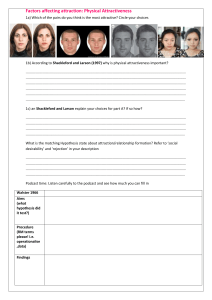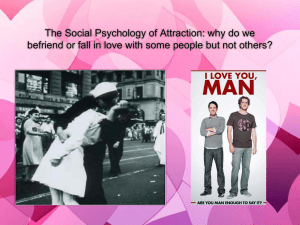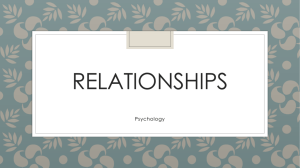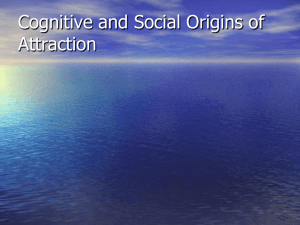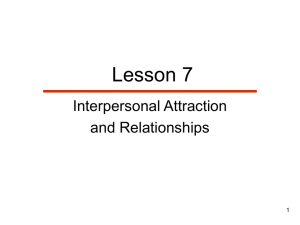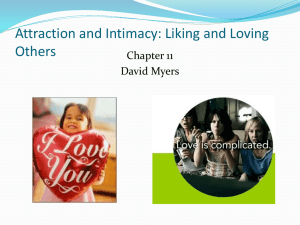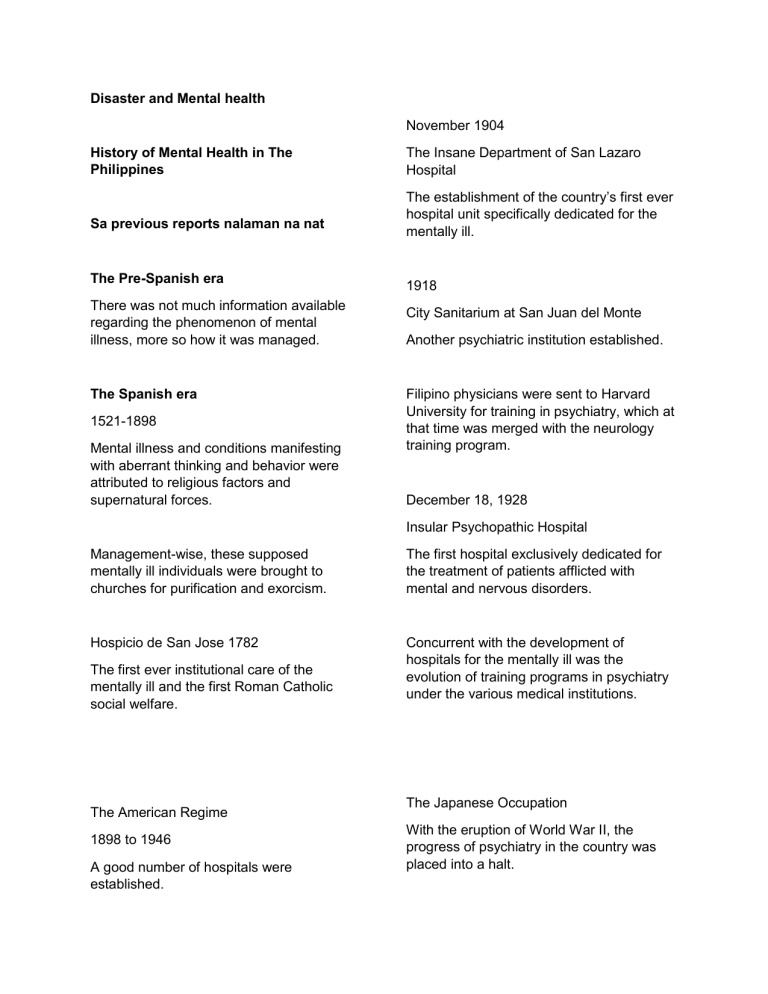
Disaster and Mental health November 1904 History of Mental Health in The Philippines Sa previous reports nalaman na nat The Pre-Spanish era There was not much information available regarding the phenomenon of mental illness, more so how it was managed. The Spanish era 1521-1898 Mental illness and conditions manifesting with aberrant thinking and behavior were attributed to religious factors and supernatural forces. The Insane Department of San Lazaro Hospital The establishment of the country’s first ever hospital unit specifically dedicated for the mentally ill. 1918 City Sanitarium at San Juan del Monte Another psychiatric institution established. Filipino physicians were sent to Harvard University for training in psychiatry, which at that time was merged with the neurology training program. December 18, 1928 Insular Psychopathic Hospital Management-wise, these supposed mentally ill individuals were brought to churches for purification and exorcism. The first hospital exclusively dedicated for the treatment of patients afflicted with mental and nervous disorders. Hospicio de San Jose 1782 Concurrent with the development of hospitals for the mentally ill was the evolution of training programs in psychiatry under the various medical institutions. The first ever institutional care of the mentally ill and the first Roman Catholic social welfare. The American Regime 1898 to 1946 A good number of hospitals were established. The Japanese Occupation With the eruption of World War II, the progress of psychiatry in the country was placed into a halt. Treatment-wise, electroconvulsive therapy became the foremost therapeutic modality using antiquated Japanese apparatus. The era of Liberation Subsequent to the end of World War II, there was an extensive expansion and rehabilitation of the existing psychiatric facilities together with the subsequent training of the workforce. Mental Health Act of 1989 Senator Orlando Executive Order 470 1998 National Health Mental Policy 2001 Dr. Manuel Dayrit July 1946 An act Establishing a National Mental Health Policy the National Psychopathic Hospital was renamed National Mental Hospital (NMH) and with financial aid from its benefactors. Philippine Mental Health Act of 2017 (Senate Bill 1354) Senator Risa Hontiveros In 1946 the Victoriano Luna General Hospital established its own 100-bed neuropsychiatric unit. In 1945 the University of the Philippines College of Medicine started to teach psychiatry as a subject, then conducted by a professor of anatomy and neuroanatomy, Marciano Limson. In 1964, The Department of Psychiatry was established as a separate unit while Neurology remained as a section under the Department of Medicine. Republic Act 11036 2018 Philippine Mental Health Law The first mental health act legislation in the history of the Philippines. “Kasama tayo sa laban para sa mental health.” – Lim Madera Disposition (end the contact and plan a follow-up) Disposition (consideration of next steps, including the need for facilitation of access to continued care as well as follow-up) SOC PSYCH Need to belong A motivation to bond with others in relationships that provide ongoing, positive interactions. What Leads to Friendship and Attraction? -Does absence make the heart grow fonder? Or is someone who is out of sight also out of mind? -Is it likes that attract? Or opposites? -How much do good looks matter? -What has fostered your close relationships? Proximity Geographical nearness. Proximity (more precisely, “functional distance”) powerfully predicts liking. Interaction Interaction enables people to explore their similarities, to sense one another’s liking, and to perceive themselves as part of a social unit (Arkin & Burger, 1980). Anticipation of Interaction Proximity enables people to discover commonalities and exchange rewards. But merely anticipating interaction also boosts liking. Mere-exposure effect The tendency for novel stimuli to be liked more or rated more positively after the rater has been repeatedly exposed to them. Implicit egotism: We like what we associate with ourselves. Physical Attractiveness Appearance does matter. Looks are a great asset. Attractiveness and Dating A young woman’s physical attractiveness is a moderately good predictor of how frequently she dates, and a young man’s attractiveness is a modestly good predictor of how frequently he dates (Berscheid & others, 1971; Krebs & Adinolfi, 1975; Reis & others, 1980, 1982; Walster & others, 1966). [insert table] Matching phenomenon The tendency for men and women to choose as partners those who are a “good match” in attractiveness and other traits. [insert comic] The Physical Attractiveness Streotype The presumption that physically attractive people possess other socially desirable traits as well: What is beautiful is good. Who is Attractive? Attractiveness is whatever the people of any given place and time find attractive. Evolution and Attraction They assume that beauty signals biologically important information: health, youth, and fertility. -Males he prefer youthful female characteristics that signify reproductive capacity. -Women to favor male traits that signify an ability to provide and protect resources. Social Comparison Although our mating psychology has biological wisdom, attraction is not all hardwired. What’s attractive to you also depends on your comparison standards. Contrast effect After viewing a superattractive person of the same gender, people rate themselves as being less attractive than after viewing a homely person (Brown & others, 1992; Thornton & Maurice, 1997). Attractiveness of those we love Not only do we perceive attractive people as likable, we also perceive likable people as attractive. Perhaps you can recall individuals who, as you grew to like them, became more attractive. Love sees loveliness. Similarity versus Complementarily Do birds together flock together? Likeness begets liking They found that the more similar someone’s attitudes are to your own, the more likable you will find the person. When others think as we do, we not only appreciate their attitudes but also make positive inferences about their character (Montoya & Horton, 2004). Dissimilarity breeds dislike? We have a bias—the false consensus bias— toward assuming that others share our attitudes. Getting to know someone—and discovering that the person is actually dissimilar—tends to decrease liking (Norton & others, 2007). Do opposites attract? Complementarity The popularly supposed tendency, in a relationship between two people, for each to complete what is missing in the other. Liking those who likes us Those told that certain others like or admire them usually feel a reciprocal affection (Berscheid & Walster, 1978). Attribution If praise clearly violates what we know is true. Ingratiation The use of strategies, such as flattery, by which people seek to gain another’s favor. Self-Esteem and Attraction Elaine Hatfield (Walster, 1965) wondered if another’s approval is especially rewarding after we have been deprived of approval, much as eating is most rewarding when we’re hungry. Gaining another's Esteem As a relationship ripens toward greater intimacy, what becomes increasingly important is authenticity—our ability to give up trying to make a good impression and begin to reveal things about ourselves that are honest even if unsavory. . . . If two people are genuinely fond of each other, they will have a more satisfying and exciting relationship over a longer period of time if they are able to express both positive and negative feelings than if they are completely “nice” to each other at all times. (p. 323) Relationship Rewards We are attracted to those we find it satisfying and gratifying to be with. Attraction is in the eye (and brain) of the beholder. Reward theory of Attraction The theory that we like those whose behavior is rewarding to us or whom we associate with rewarding events.

